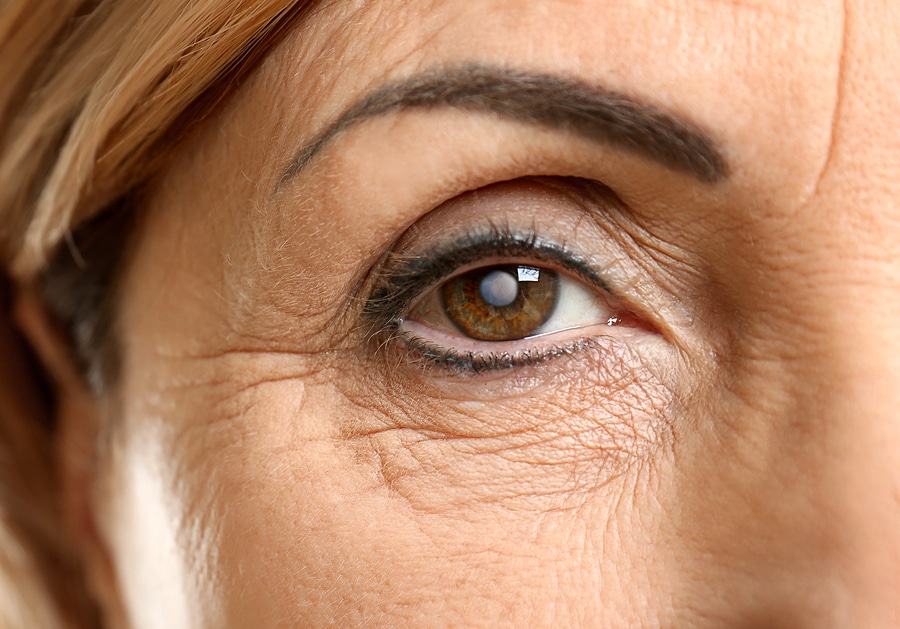At some point, usually after age 60, most people will develop a cataract. But common symptoms, such as blurry vision, sensitivity to light and trouble with night vision, may not occur right away, and in fact, early cataract symptoms are often associated with other conditions. So how do you know if what you are experiencing is a natural (and treatable) age-related cataract, or something else? To answer the question, let’s start by looking at what a cataract actually is:
What is a cataract?
As we age, the lenses of our eyes begin to change. These normally transparent and flexible tissues located behind the colored part of the eye can become thicker and less flexible, and the tissues can start to break down and clump together. This clumping forms cloudy areas on the lens, which are known as cataracts. When a cataract forms on the eye’s lens, it can cause vision to appear as though you are looking through a foggy window.
What are early signs of cataracts?
One important thing to know about cataracts is that in the beginning, they may not be noticeable at all. Usually, cataracts cause a slow, steady decline in vision as they progress. In the early stages, it can be easy to dismiss mild cataract symptoms as small annoyances or as simply needing a stronger eyeglass prescription. Here are 7 common signs of cataracts to look out for:
1. Foggy or blurry vision – In the early stages of a cataract, you might feel like your glasses or contact lenses are constantly dirty and find yourself cleaning them more frequently than you used to.
2. Sensitivity to light or glare – In an attempt to reduce glare, you may find yourself repeatedly reaching for your sunglasses or squinting more frequently than normal.
3. Needing more light to read – You may find that you move closer to a light source when reading a book or newspaper or doing other activities.
4. Difficulty driving after dark – You might begin to feel unsafe driving at night and you may experience visual halos that form around light sources like oncoming headlights.
5. Fading or yellowing of colors – You might notice that colors do not appear to be as bright or vibrant as they used to. It could be very subtle at first and possibly limited to only a small part of your field of vision.
6. Frequent changes in eyeglass or contact lens prescriptions – A common early cataract symptom is needing to increase the strength of eyeglass or contact lens prescriptions and needing to change them more frequently.
7. Double vision in a single eye – At first, a cataract might only affect a small portion of the eye’s lens and may be barely noticeable, but as it grows, you might find yourself seeing double out of one eye, and it may or may not seem to occur quite suddenly.
What should you do if you think you might have cataracts?
Even when symptoms are mild and cataracts may not be noticeable to you, they will be noticeable to your eye doctor. That’s why it’s important to get regular eye exams. Early detection of cataract is critical. Most eye doctors recommend having a comprehensive eye exam every one to two years, depending on age and medical history. Learn more about what to expect in an eye exam here.
Fortunately, recent technological advancements in intraocular lenses, or IOLs (the artificial lens that replaces the natural lens that has become clouded by a cataract) have minimized the need for glasses post cataract surgery. Learn more about the IC-8 lens and how it works in seeing near to far.
For more information about cataracts and cataract surgery:
https://www.mayoclinic.org/diseases-conditions/cataracts/symptoms-causes/syc-20353790
https://www.allaboutvision.com/conditions/cataracts.htm



